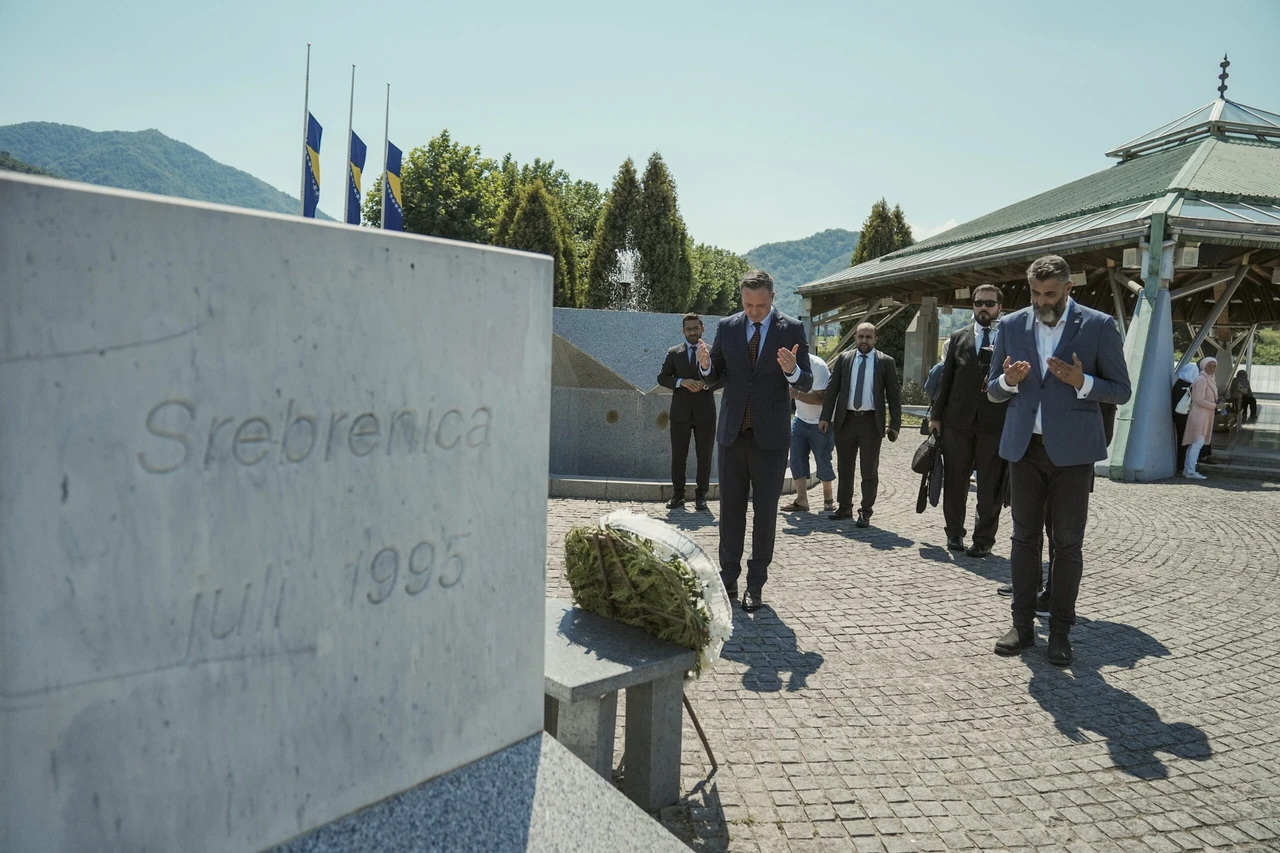Turkish agency to establish museum in Srebrenica to memorialize genocide victims
 TIKA President Serkan Kayalar, and the Director of the Srebrenica Memorial Center, Emir Suljagic, pray at the memorial cemetery in Sarajevo, Bosnia and Herzegovina on August 15, 2024. (AA Photo)
TIKA President Serkan Kayalar, and the Director of the Srebrenica Memorial Center, Emir Suljagic, pray at the memorial cemetery in Sarajevo, Bosnia and Herzegovina on August 15, 2024. (AA Photo)
In a move to preserve the memory of the 1995 Srebrenica genocide, the Turkish Cooperation and Coordination Agency (TIKA) is set to convert a symbolic site of the atrocity into a museum.
The former battery factory in Srebrenica, which United Nations troops used during the Bosnian War and where Serbian forces carried out part of the genocide, will become a memorial museum under an agreement between TIKA and the Srebrenica Memorial Center. Over 8,000 Bosniak civilians were killed by Serbian forces in what has been recognized as Europe’s worst massacre since World War II.
TIKA President Serkan Kayalar, along with officials from the Srebrenica Memorial Center, signed the agreement at the site, marking the next step in the project. Speaking to reporters, Kayalar said TIKA had been working on the project for three years, restoring the factory’s infrastructure and preparing it for its transformation.
“This is a place of deep symbolic importance, and we aim to turn it into a genocide memorial museum,” said Kayalar. He added that the goal is to have the museum open by next year, following the directive of Turkish President Recep Tayyip Erdogan. Kayalar also noted the importance of global recognition of the genocide, emphasizing that the world has yet to fully reckon with the tragedy.
Srebrenica Memorial Center praises efforts
Srebrenica Memorial Center Director Emir Suljagic praised the collaboration with TIKA, stating that Türkiye has been one of the center’s largest supporters. He described the working relationship as one based on trust and respect, allowing the center full control over how the story of Srebrenica is told.
“Nobody here tried to tell us how to share our history,” said Suljagic. “This is our story, and we are the ones who will tell it. TIKA has been clear that they are here to support us, not to direct us.”
The museum is expected to open in time for the 30th anniversary of the genocide in 2025. Exhibits will include unreleased video footage from investigations conducted by the International Criminal Tribunal for the former Yugoslavia. This material, Suljagic said, will help convey the magnitude of the tragedy. Artifacts recovered from the Kravica warehouse, such as bones and personal belongings, will also be displayed.
Suljagic added, “We need more friends like Türkiye. With this museum, we complete the story of the Srebrenica Memorial Center.”
What is Srebrenica genocide?
On July 11, 1995, Serbian forces led by General Ratko Mladic overran Srebrenica, a designated UN safe zone. Thousands of Bosniak civilians who had sought refuge with Dutch UN troops were later handed over to Serbian forces. While women and children were allowed to flee, over 8,000 men and boys were executed and buried in mass graves.
Efforts to locate the victims have continued for nearly three decades, with more than 1,000 victims still missing. Each year, on the anniversary of the massacre, newly identified remains are laid to rest at the Potocari Memorial Cemetery in Srebrenica.



